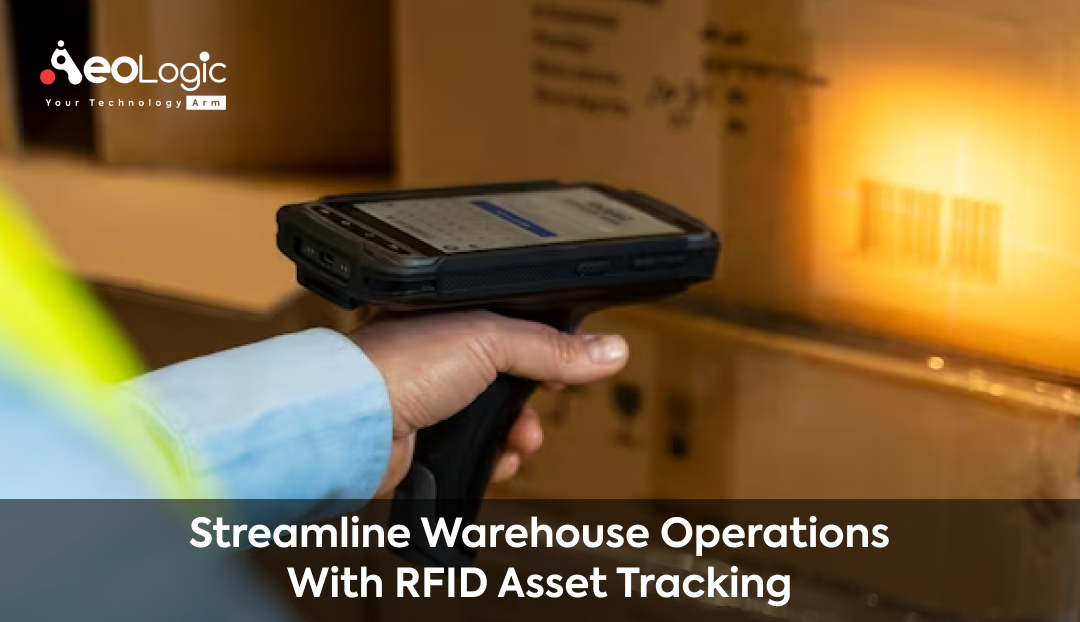In today’s high-speed life, it is new must successful business to be competitive and respond to the market in partnership with the client. A revolutionary technology in the field of warehouse management is tracking warehouse assets using RFID (Radio-Frequency Identification). This article takes a closer look at how an RFID asset tracking system can provide warehouse optimization, efficient inventory control, increased security and better performance.
What is RFID Asset Tracking?
![]()
RFID Asset Tracking is a radio wave-based tracking technology that identifies and tracks items in a warehouse or any other environment. Such small tags are placed on every item and include a discrete code only for this article. RFID readers on the other hand communicate with these tags and can be auspiciously installed across the warehouse. Their data are automatically recorded in a database as items pass by these readers, making it possible to track and monitor them concurrently.
Benefits of RFID Asset Tracking
Implementing warehouse operations with RFID asset tracking can lead to numerous benefits, including:
1. Enhanced Inventory Accuracy
Warehouse operations with RFID asset tracking faces one of the largest challenges of accurate inventory records. Unfortunately, manual tracking methods are susceptible to errors resulting in stock level discrepancies. The RFID asset tracking has greatly helped to improve on the accuracy of the inventory. With an effective system, it is easy to know where each item is located, monitor the quantities and avoid stockouts or overstocking.
Also Read: How to Integrate RFID With Inventory Management
2. Improved Efficiency
Application of rfid technology in streamlining warehouse operations. RFID tags can be scanned even without direct line-of-sight and this considerably reduces time spent searching for items. That’s why searching for products and order fulfillment are fast and accurate, which lowers labor costs.
3. Real-Time Visibility
The most visible case is RFID technology in your warehouse operations. From receiving to shipping, the movement of items throughout the facility can be monitored. Such transparency helps in making better decisions and uncovering bottlenecks or areas for improvement.
4. Increased Security
RFID tags are not only for inventory o tracking. They could also improve the warehousing security. You can deter theft and unauthorized access by attaching RFID tags to valuable assets. If an item is moved without authorisation, then an alarm goes off to notify the guards.
5. Streamlined Auditing and Compliance
Auditing is much simplified with RFID asset tracking, which is indispensable in adhering to the set regulations. In place of time-wasting manual audits, you can engage in swift and precise audits with the use of RFID technology. This saves time and minimizes the possibility of errors.
Do you Know? Role RFID Traceability in Medical Device Industry
Implementing Warehouse Operations with RFID Asset Tracking
![]()
Now that we understand the benefits of RFID asset tracking, let’s explore how to implement this technology in your warehouse operations:
1. Evaluate Your Needs
However, before you implement RFID asset tracking, it is important that you consider certain special needs and goals of your warehouse. That works well if you know the types of things you want to track, have a lot of inventory or already have processes that would lend themselves to improvement by using RFID.
2. Choose the Right RFID System
Choice of the suitable RFID system is what matters most. You must decide which RFID tags are best given your products and environment. You will also need RFID readers and software that can work with your existing warehouse management system (WMS).
3. Tag Your Inventory
So, after obtaining the required RFID equipment, it is time to tag your inventory. Tag the items through RFID. Depending on what you want, the tags can be attached to either product packaging, pallets or individual items.
4. Install RFID Readers
Consider installing RFID readers on strategic points within your warehouse such as at the entrance, store and exit plus shipping docks. Your inventory items will have RFID tags that these readers will communicate with.
5. Train Your Staff
Your employees need to be trained properly, so that they could use the RFID solutions in an effective way. The nurses should be competent in scanning tags, interpreting the data, and solving any problem that might arise in the process.
6. Test and Optimize
However, before fully testing RFID asset tracking in your warehouse operation it is advised that testing should be done to identify any issues and improvements. Lastly, use the feedback and data gathered during the testing phase to optimize the system.
Also Read: Benefits of RFID in Asset Tracking Management for the Navy
Challenges of Warehouse Operations with RFID Asset Tracking
While RFID asset tracking offers numerous benefits, it’s important to be aware of potential challenges and how to address them:
1. Cost: It needs to be noticed, that the implementation of RFID is likely to require considerable upfront costs. Though the costs are high, realization of improved efficiency and low expenditures occur in the long term.
2. Integration: This could be complicated, if you add the RFID system to your existing warehouse management software. Possibly, with a qualified and seasoned RFID solution provider integration processes cannot pose such kind problems.
3. RFID Tag Durability: Some warehouse environments may subject the RFID tags to harsh conditions, which can impact on their lifespan. Failure in tag read leaves with option of selected on basis of their design even as they work together idealize the company’s difficulties.
4. Privacy Concerns: There are privacy reasons because the RFID technology is used in sensing locational items, including people. We should develop transparent policies and procedures to privacy-related matters and total compliance with the regulations.
Real-World Success Storie
To illustrate the effectiveness of RFID asset tracking in warehouse operations, here are a couple of real-world success stories:
Case Study 1: Retail Distribution Center
One major retail distribution center adopted RFID assets to enhance the accuracy of their inventory management. They reduced inventory discrepancies by 90% through tagging of products with RFID tags. The improved accuracy has resulted in reduced stockouts and enhanced customer satisfaction.
Case Study 2: Manufacturing Facility
RFID asset tracking in a complex machinery manufacturing facility. RFID tags were attached to the work-in-progress items and their movement through different manufacturing stages was tracked with the help of RFID readers. This allowed them to decrease production cycle times by 20%, enabling them to save costs and increase production capacity.
Also Read: How RFID Tagging Solutions for Ammunition Will Help the Soldiers
Final Words
In modern supply chains, warehousing operations form a vital part, and RFID asset tracking brings out an excellent optimization opportunity for these processes. RFID technology helps in improving inventory accuracy as well as enhancing efficiency. It also provides real time visibility, increase security and simplifies auditing and compliance.
When choosing an RFID asset tracking system for your warehouse, always consider your particular needs, select the right RFID system, label your inventory, install RFID readers, train your employees, and constantly test and optimize the system. Although there might be the challenges to be solved, the long-run benefits make RFID asset tracking worth the attempt for each modern warehouse seeking to succeed on the open market.
By implementing RFID asset tracking, you will revolutionize your warehouse operations, cut costs, improve customer service, and prepare your business for success in this dynamic field.







